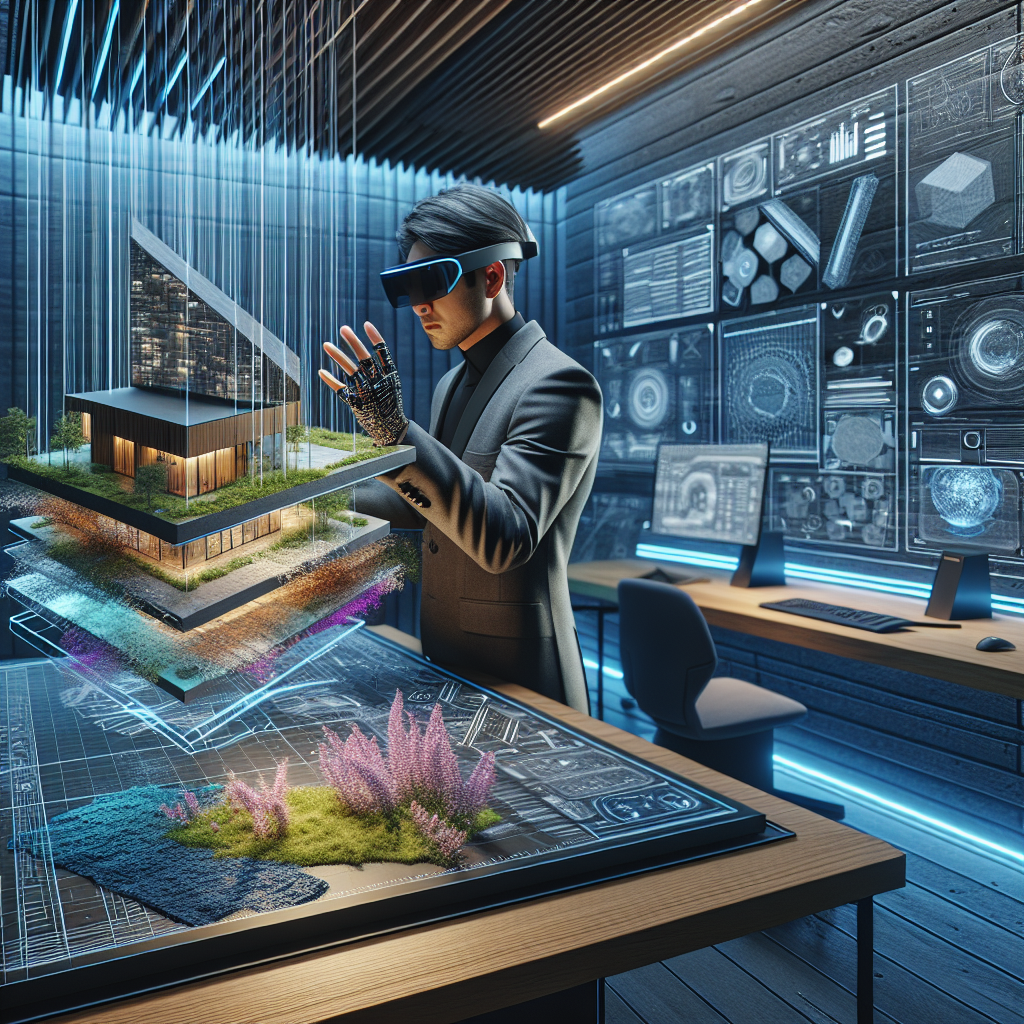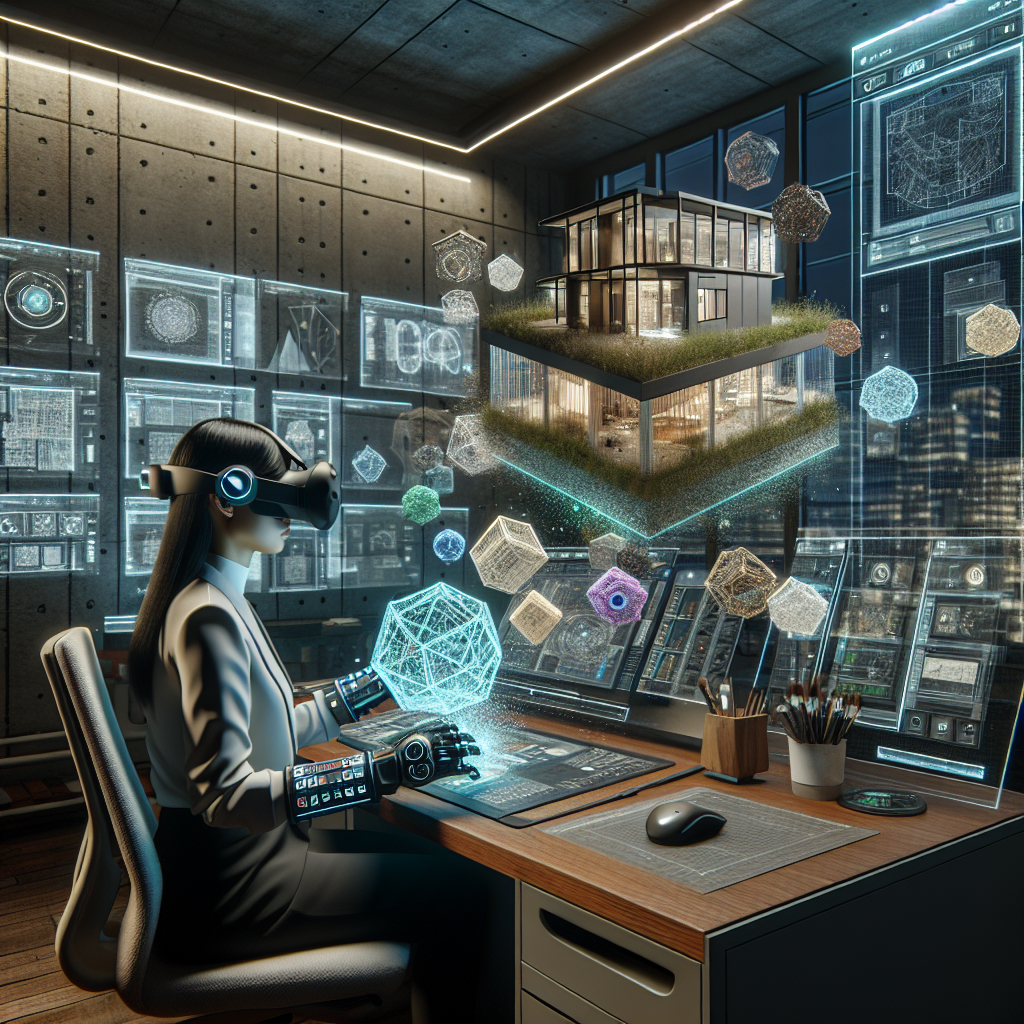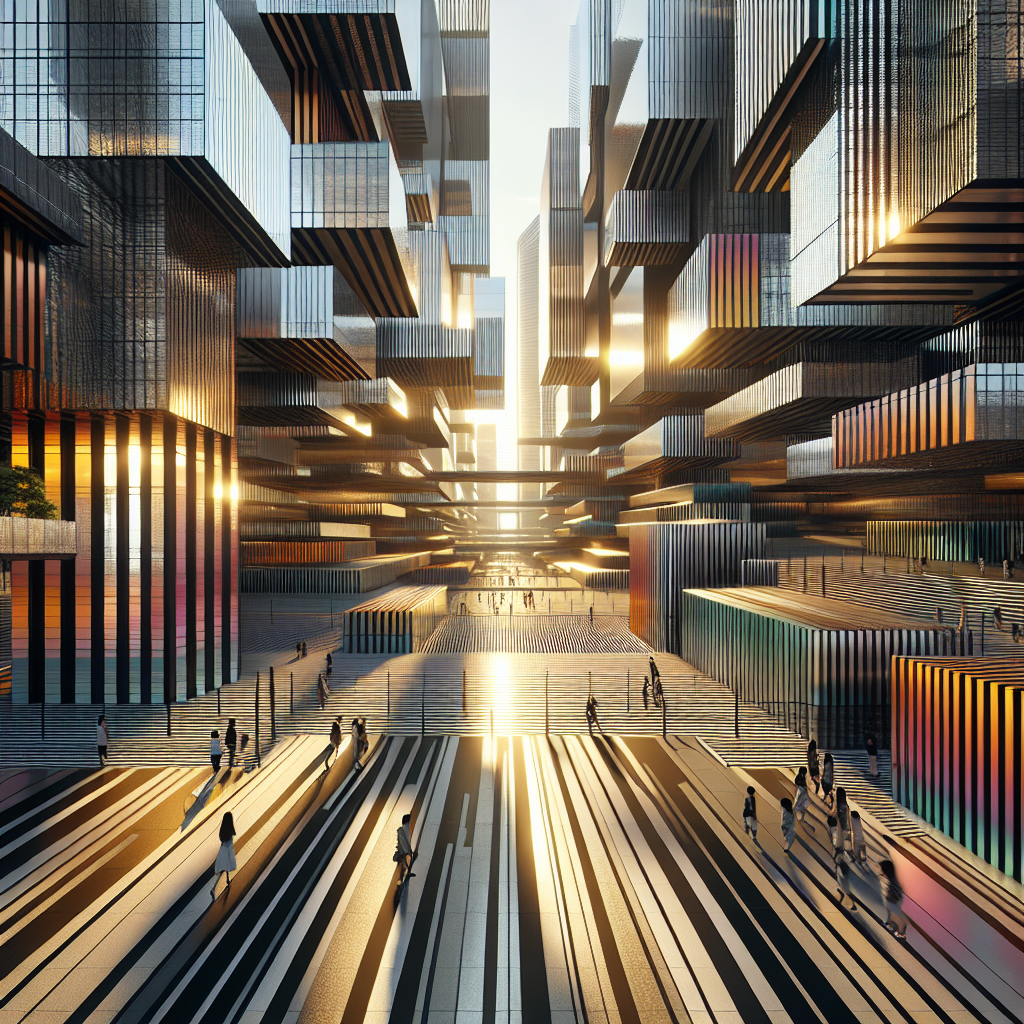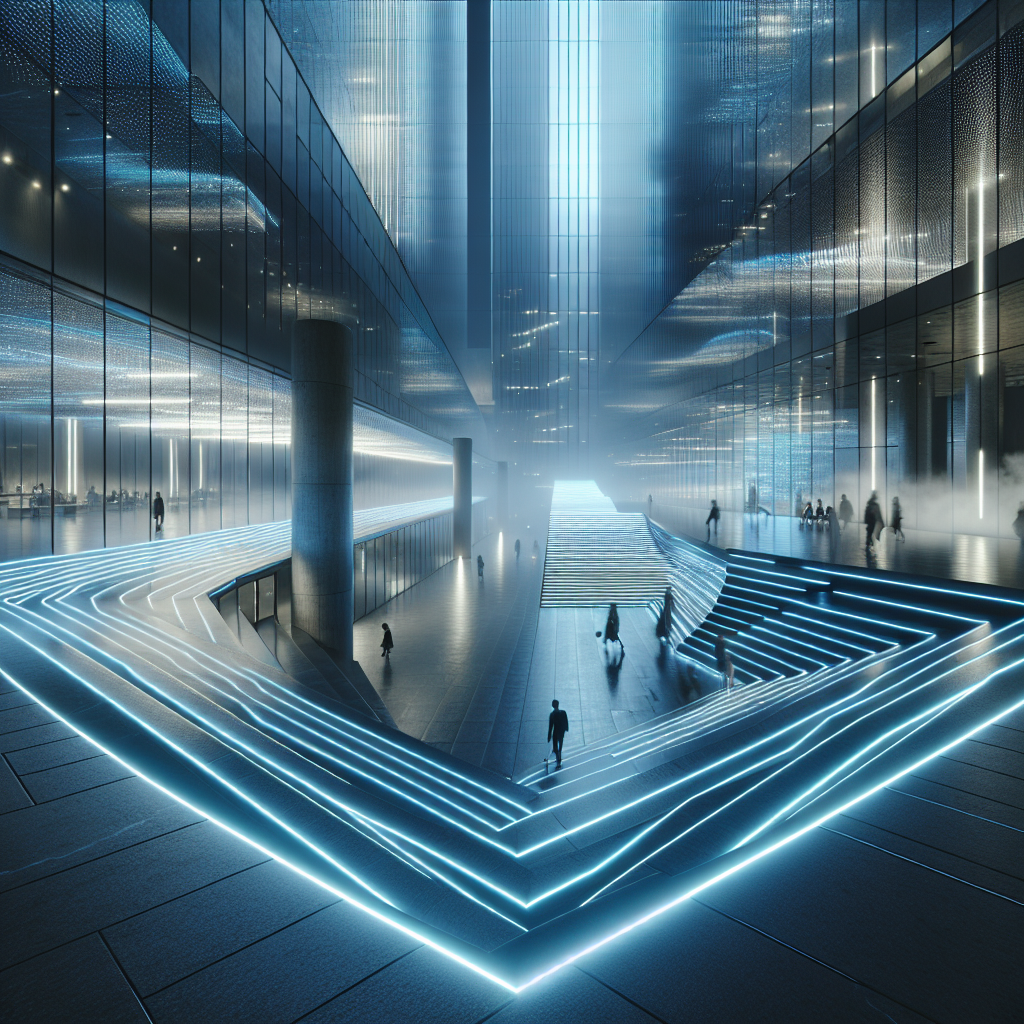Tinkering with tangibility: haptic feedback in virtual design studios
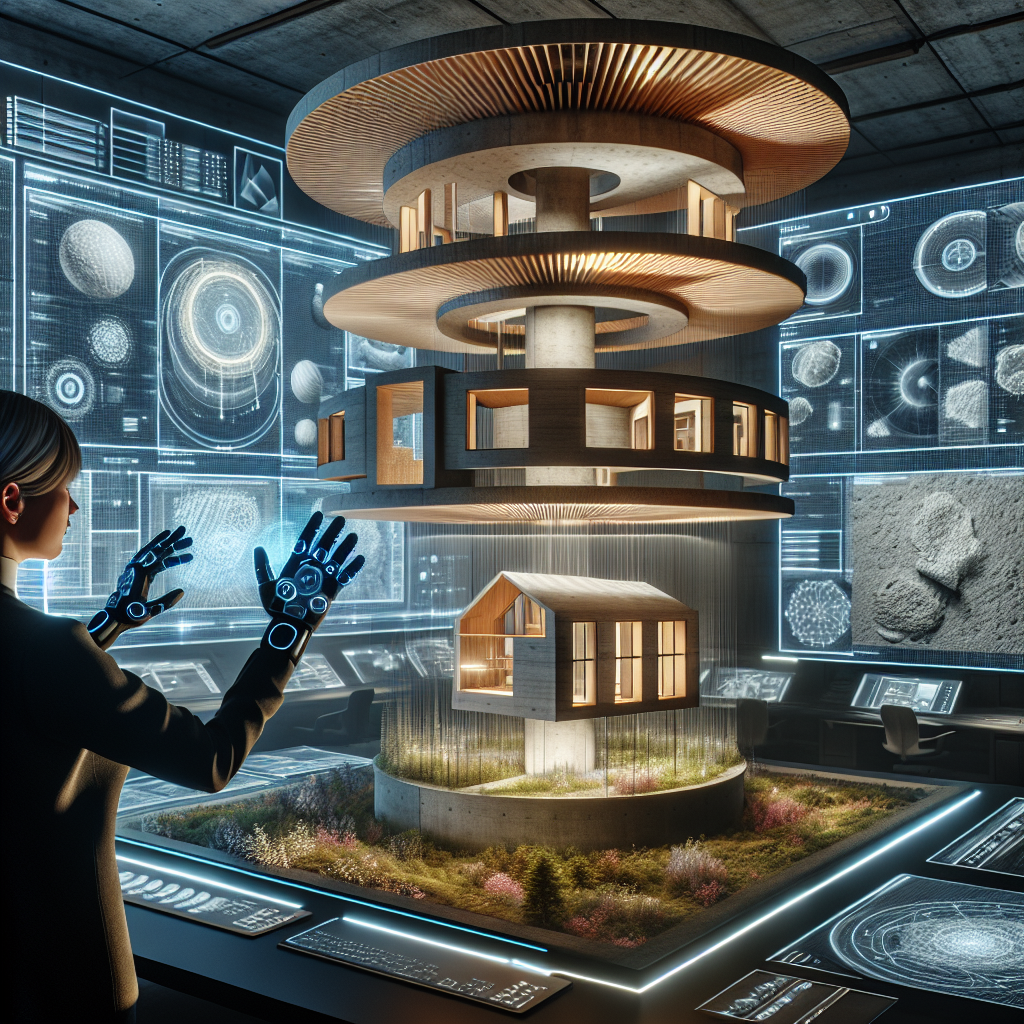
Tinkering with Tangibility: Haptic Feedback in Virtual Design Studios
As the architectural world increasingly embraces digital realms, the quest for tangible interaction within virtual spaces has become paramount. Architects and designers, accustomed to sketching ideas, feeling textures, and physically interacting with models, are now exploring innovative ways to integrate sensory experiences into digital design processes. Enter haptic feedback technology, a groundbreaking approach that bridges the gap between the virtual and physical worlds, redefining the very essence of architectural creativity.
The Sensory Shift in Architectural Design
Traditionally, architecture has been a profoundly tactile discipline. The grain of timber, the coolness of marble, the warmth of textiles—these sensory interactions inform critical design decisions. Yet, as digitalization accelerates, the profession has faced a growing disconnect between designers and their creations. While virtual reality (VR) has provided visual immersion, it lacks the physicality architects inherently crave. Haptic feedback technology addresses this gap, offering a compelling solution that restores tangibility to virtual design studios.
Imagine sculpting a digital model and feeling the resistance of materials, the texture of surfaces, or the weight of structural elements through subtle vibrations and tactile sensations. This is precisely what haptic technology delivers, transforming abstract digital concepts into sensory-rich experiences. As a result, architects can make more informed, intuitive decisions, enhancing the overall quality and authenticity of their designs.
Haptic Technology: A New Frontier in Virtual Studios
At its core, haptic feedback technology simulates the sense of touch through mechanical vibrations, force feedback, and motion tracking. By integrating specialized gloves, styluses, or wearable devices, designers can physically interact with digital models, experiencing realistic sensations that mirror real-world interactions. This technology is already revolutionizing industries such as automotive design, medicine, and gaming, and its application in architecture is proving equally transformative.
Leading design studios are rapidly adopting haptic tools, enabling architects to “feel” their designs during the conceptual phase. For instance, the integration of haptic gloves allows designers to grasp virtual door handles, assess ergonomic comfort, or gauge the tactile quality of materials. Similarly, force-feedback styluses empower designers to sculpt virtual clay models, experiencing realistic resistance and texture. These innovations foster a deeper connection between designers and their creations, enhancing creativity and precision.
Case Study: Studio Sensoria’s Haptic-Enhanced Virtual Workspace
One exemplary pioneer in this field is Studio Sensoria, a cutting-edge design firm renowned for integrating sensory technologies into their workflow. Their recent project, the “Sensoria Virtual Atelier,” demonstrates the profound impact of haptic feedback on architectural design. Utilizing advanced haptic gloves and immersive VR environments, the studio’s architects crafted a sophisticated residential complex, meticulously evaluating textures, spatial proportions, and material interactions in real-time.
The resulting design—a harmonious blend of natural timber, polished concrete, and lush biophilic elements—showcases an unprecedented level of sensory refinement. According to Studio Sensoria’s lead architect, Elena Rossi, “Haptic feedback allowed us to experience our design intuitively, making informed decisions about materiality and spatial relationships that would have been impossible through visuals alone.” The project’s success underscores the immense potential of haptic technology in elevating architectural design processes.
Enhancing Collaboration and Communication
Beyond individual creativity, haptic feedback significantly enhances collaborative workflows within virtual design studios. Teams dispersed across continents can simultaneously interact with shared digital models, experiencing identical tactile sensations. This capability fosters clearer communication, reduces misunderstandings, and accelerates decision-making processes. For instance, international teams working on complex projects, such as the upcoming Paris Olympic venues, benefit immensely from haptic-enhanced virtual collaboration, streamlining design iterations and improving overall project efficiency.
Moreover, haptic feedback facilitates more effective client presentations. Clients unfamiliar with architectural drawings or abstract digital models can now physically interact with proposed designs, gaining a deeper understanding and appreciation of the architect’s vision. This immersive approach strengthens client relationships, builds trust, and ensures alignment between client expectations and final outcomes.
Sustainability and Material Innovation
Haptic technology also contributes significantly to sustainability efforts within architecture. By enabling designers to accurately assess material properties virtually, it reduces the need for physical prototypes, minimizing waste and resource consumption. Architects can confidently explore innovative, sustainable materials, such as engineered timber or biodegradable composites, experiencing their tactile qualities digitally before committing to physical production.
Additionally, haptic feedback encourages experimentation with unconventional materials, fostering innovation and pushing architectural boundaries. Designers can safely explore the structural integrity and sensory appeal of novel materials, accelerating the adoption of sustainable alternatives and contributing to the industry’s broader environmental goals.
Challenges and Future Prospects
Despite its transformative potential, haptic feedback technology faces several challenges in widespread adoption. High initial investment costs, technological complexity, and the need for specialized training can pose barriers for smaller studios. However, as the technology matures and becomes more accessible, these obstacles are expected to diminish significantly.
Industry forecasts predict rapid growth in haptic technology adoption within architecture and design sectors over the next decade. According to recent studies, the global haptic technology market is projected to reach $35 billion by 2030, driven by increased demand for immersive experiences across various industries (Wikipedia). As architects increasingly recognize the benefits of tactile interactions in virtual environments, haptic feedback will undoubtedly become an essential component of future design studios.
The Intersection of Haptics and Biophilic Design
Interestingly, haptic technology aligns seamlessly with the growing trend of biophilic design, which emphasizes human connections to nature within built environments. By enabling designers to tangibly experience natural textures, such as the roughness of stone or the softness of moss, haptic feedback enhances biophilic design processes, fostering spaces that resonate deeply with human sensory preferences.
Architects can virtually experiment with biophilic elements, fine-tuning their sensory qualities to create environments that promote well-being, reduce stress, and enhance occupant satisfaction. This synergy between haptic technology and biophilic principles represents a compelling avenue for future exploration, promising to elevate architectural design to unprecedented sensory heights.
Conclusion: A Tangible Future for Virtual Design
As architecture continues its digital evolution, the integration of haptic feedback technology marks a significant milestone, restoring the tactile dimension essential to creative expression. By bridging the sensory gap between virtual and physical realms, haptic tools empower architects to craft designs that are not only visually compelling but also deeply resonant on a sensory level.
From enhancing collaboration and sustainability to fostering innovation and biophilic connections, haptic feedback is poised to redefine architectural practice profoundly. As designers continue tinkering with tangibility, the future of virtual design studios promises to be richly tactile, profoundly immersive, and undeniably inspiring.
